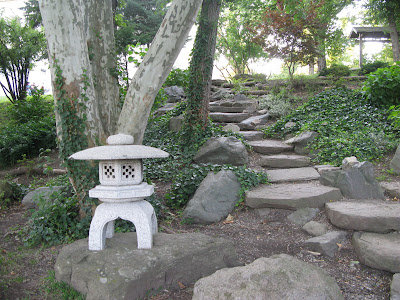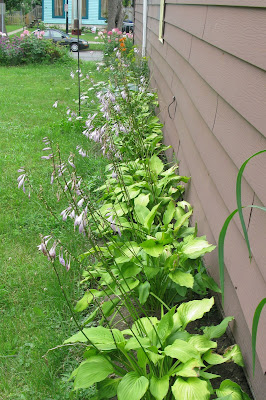
Here in Western New York we have been blessed with a few days of unseasonably warm weather so I have been busy spending time outdoors doing those many last minute chores that seem to never go away.
I don’t usually plant many spring bulbs but I have always planted crocus near my front door. In the early springtime, even when snow is still on the ground, the little crocus is always faithful and peeps through the snow. It never fails to make me happy and puts a song in my heart at a time when I am feeling that winter will never end.
This weekend I planted three Allium Grandiflora Lily bulbs and a bed of croci. I purchased the Allium at our local community co-op, Urban Roots. Now that they are in the ground I look forward to seeing the blooms next year, so in anticipation, I have posted a photo of this flower above. J Isn't it beautiful?
There are probably only a few more days of gardening time in this area but here are some things to check for:
1. Edge your perennial beds and continue gathering seeds that are now dried and have turned dark brown or black.
2. Remove any perennial weeds that have invaded the garden.
3. It is amazing that I still have some Dandelions blooming in November. Make sure that you remove any annual weeds that are going to seed. Throw these in the garbage, not in the compost pile or next year there will be ten times as many.
4. Take pictures, make notes, and if you haven’t done this already - start a scrapbook or do anything at all that allows you to remember the past season with its successes and failures in detail.
5. Scope out to see if you have any plants that should be moved to another area. You can even just mark the plants for moving next spring by using that brightly colored surveyor's flagging tape.
However, moving or dividing perennials in the autumn is a great way to reduce your work next spring. The cool, moist weather is an ideal time for perennial roots to become well established, even in cold-winter regions. Peonies are best moved or divided in the fall only.
Well, it is 62 degrees today so I am off into the garden to see what else I can do. I am already becoming wistful at the idea of only working indoors for the next few months. No I don’t mean housework – I am planning to do more writing J


















































